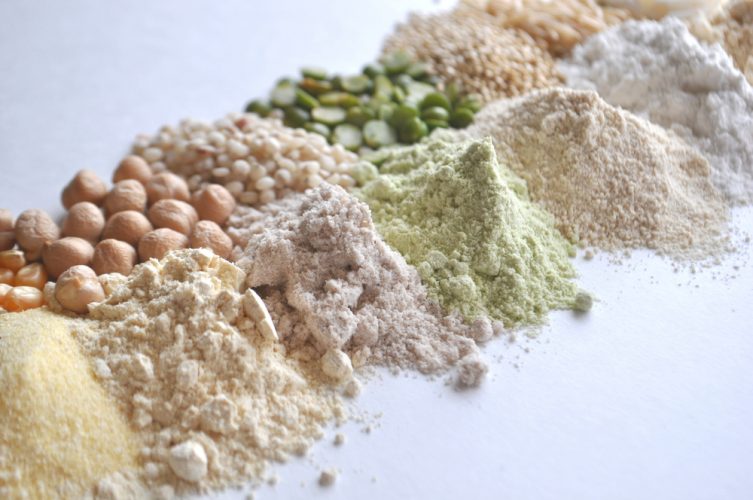By: Tayler Glenn
Depending on if you’re looking for a less processed cookie or a higher protein pancake recipe, choosing from the sheer number of healthy flour substitutes is a little overwhelming, right? Here is a breakdown of the most popular healthy flour substitutes & how you can start using them to make all of your favorite recipes.
Healthy Flour Substitutes
Almond Flour
This nutty, protein-rich option is one of the most nutrient-dense of all flour substitutes in gluten-free cooking and baking. Full of protein, vitamins, calcium, fiber, and fats, it’s a great way to lower the carbs & GI of any recipe.
How to use it: Almond flour is a very versatile substitute, but it does have a nutty taste. It holds together well which makes it perfect for crusts & crumbles, but be careful swapping it with a 1:1 ratio when the recipe calls for regular flour. It can have a more dense, chewy texture but this can be avoided by only swapping 30% of the amount of regular flour for almond.

Coconut Flour
Another swap high on the list of healthy four substitutes is coconut flour! Made from dried coconut meat, this alternative flour is high in protein, fiber, and fat. Plus, it’s low on the glycemic index!
How to Use It: It’s super absorbent. Recipes calling for coconut flour use a lot less than you would think and way more eggs than a normal recipe would. One-to-one substitutions won’t work in many recipes, so the general rule is to substitute 1/4 to 1/3 cup coconut flour for every cup of all-purpose flour that a recipe calls for. You may also need to increase the amount of liquid in the recipe to keep it from getting dry & flakey.

Chickpea (Garbanzo Bean) Flour
This, like almond flour, is an incredibly nutrient-dense flour alternative. Not only is it packed with protein and lower in carbs than traditional flours, but it also has the fiber and micronutrients to place it high on your go-to list.
How to Use It: Many bakers love chickpea flour because it has great binding power that gives baked goods a sturdy texture! That makes it perfect for making bread, muffins, and cakes without needing to alter the recipe too much. Just don’t eat the batter – it’s bitter before you bake it!

Banana Flour
This one isn’t quite as big as the others…yet. It’s a low calorie and gluten-free alternative with high levels of resistant starch. You can use less banana flour than you would regular flour & still end up with a fluffy baked good!
How to Use It: It blends well into smoothies (and the resistant starch is better eaten raw, anyway!) but be sure to add a bit of extra liquid to avoid too much thickness. For baking, use 3/4 cup banana flour for every cup of regular flour in a recipe. Be aware that it may be more dense than usual, so it’s best for muffins and bread!





Comments (0)